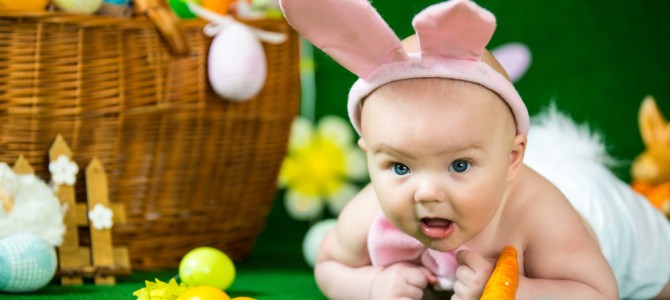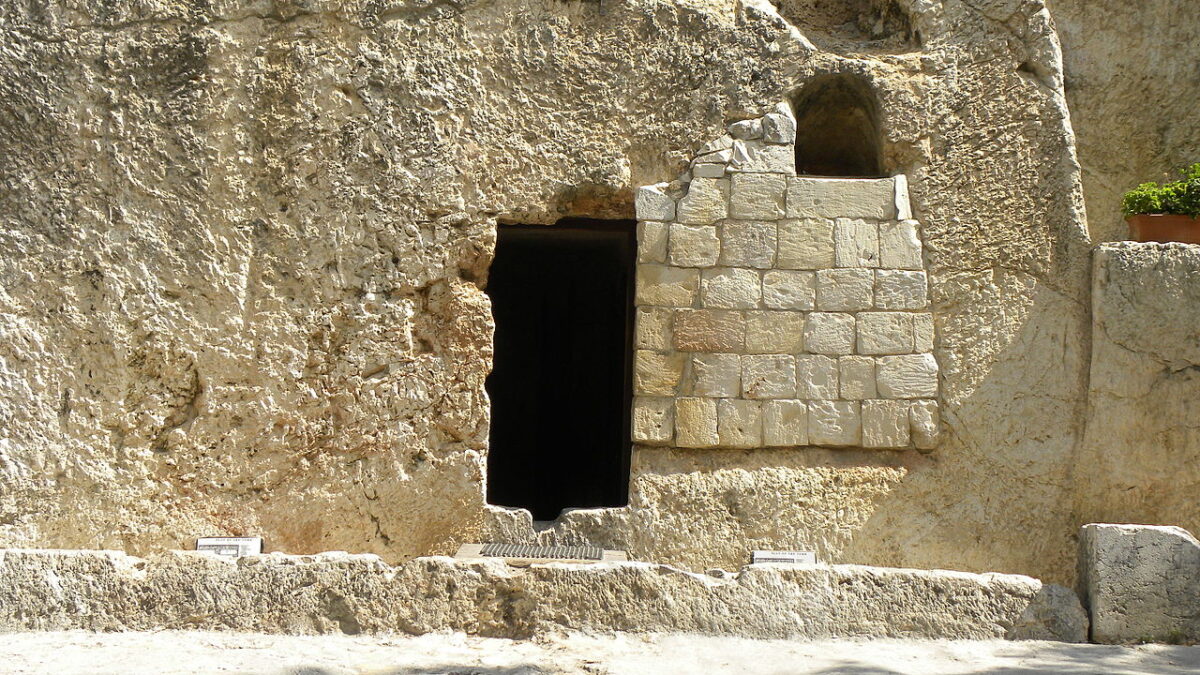
Earlier this week I went to get my children Easter cards. I was in a holiday store that sells goods for Christmas, Halloween, and Easter. Its Easter card selection was cute but didn’t include anything even remotely religious. So I went to the neighborhood card store to pick up something a bit more on-topic for the highest day of the church year.
Paper Source had a bunch of cards featuring bunnies. Some chicks. Dogs with bunny ears. Cats with bunny ears. One card was just bunny ears with no animal attached to them at all. The only remotely religious card was one making light of Judas. My children, who recently chastised me for saying the “Easter ‘A’ word” while singing a Bruno Mars song, would probably cry and/or riot if I gave that to them.
I went up to the counter and asked to be directed to the religious Easter card selection. The lady at the counter took me right back to the Judas card. Literally, a card teasing about Judas.
The entirety of my @paper_source store’s religious cards offered for Easter was this one, making light of Judas. pic.twitter.com/E9sRu1Ly3F
Mollie (@MZHemingway) March 21, 2016
I love bunnies. I love chicks. And who doesn’t love dogs with bunny ears? I do not, however, like making light of Judas’ betrayal of Jesus. That, and I would like to be able to buy my children over-priced Easter cards that get even close to referencing the Resurrection.
The Complex History of Easter Commercialization in the United States
But this isn’t a story about how Easter was celebrated with proper devotion until a few years ago. In fact, the public square’s rejection of a religious Easter couldn’t have an older pedigree in the United States. Puritans followed a pattern of work and rest on the Sabbath but rejected the liturgical calendar and worked on Roman Catholic and Anglican holy days. They did not mark Christmas, Easter, or Whitsunday (Pentecost). Neither did many other colonists or early Americans. It was really only after widespread immigration of more liturgical Christians in the second half of the 19th century that Americans began marking Easter with fervor. And that eventual marking of Easter in the public square had a lot to do with making money.
“Retailers are responsible for both the rise of religiosity in commercial ventures, and their decline,” argues Leigh Eric Schmidt in “Consumer Rites: The Buying and Selling of American Holidays,” an excellent book that discusses much of what is mentioned in the paragraphs to come. Shopkeepers figured out that religious trappings lured customers into stores. These stores frequently had more religious symbols than the churches themselves.
Downtown Philadelphia department store Wanamaker, whose proprietor was a devoutly religious man, was known for its heavily religious decorations both at Christmas and Easter. Until the mid-1950s, at least, when crèches were replaced with Rudolph. For Easter, Wanamaker’s Grand Court featured angels, lilies, crosses, an empty tomb, and banners that read “He is Risen!” and “Alleluia.” In the 1930s the floor featured Mihály Munkácsy’s paintings “Christ Before Pilate” and “Christ on Calvary.”
Retailers also went for more non-religious symbols to popularize and profit off of the holy day. Those cards with bunnies, eggs, and chicks that bothered me were in use by the late 19th century, along with chocolates and candies. Non-liturgical Protestants wanted to celebrate Easter without the trappings of their liturgical brethren, after all.
Schmidt notes how complex this relationship is between Christianity and consumer culture. “The churches clearly profited to some degree from the new cultural prominence that the market gave Christmas and Easter; the commercial culture, after all, helped make them pervasive, almost obligatory observances and provided the relatively austere liturgical culture of evangelical Protestantism with lust for new corporeal forms for celebration. Still, this dalliance with the marketplace was always problematic. The commercial culture sought to redefine Christianity and its feasts in its own promotional image.”
American theologian and ethicist Reinhold Niebuhr (admired by President Barack Obama) wrote a bit more scathingly of bringing “the discredited pagan gods in Christian disguises, hoping that the traditional piety may be merged with the secular forms of self-confidence.”
Moving the symbols of Easter from the church to the marketplace changed how people understood them, argues Schmidt. “Perhaps such religious emblems became quite literally so much window dressing – that is, artificial, distracting, and illusory fluff, little more than splashes of color and attractive packaging, a vapid and insincere mimicry of liturgical art.” Even more, because they became the means by which profits were secured, “Surveying the wondrous cross within a show window or a department store effectively shifted the foundations of this crucicentric piety from self-denial to self-fulfillment. … This was no small subversion. Traditional Christian symbols of self-abnegation had come to legitimate luxury, elegance and indulgence.”
In this light, the transition to non-religious symbols of eggs, chicks, and baskets seems less harmful to religious expression. It’s worth emphasizing, though, that the move away from specific religious convictions into fuzzy animals was mostly recent, despite what comedians might wish to believe, and largely about the ease of selling goods and celebrating spring.
De-Christing Easter
Stephen Colbert liked to make fun of the “War on Easter” each year during his show in which he played a caricature of a conservative television anchor. But the examples he pretended to criticize were frequently of things that showed the war had already advanced pretty far. Changing the name of the Easter Bunny to the Spring Bunny, after all, is of not much importance to the Christian.
Compared to Christmas, Easter hymns and art are far more difficult to secularize. Christmas is a story of family, and its celebration isn’t exactly undermined when it’s marked around hearth and home. The Triduum and Easter — about Christ’s rejection, crucifixion, and resurrection — are a bit more difficult to retain their meaning alongside secular celebration of bunnies and chicks.
How did Easter become so shlocky and shallow? Philip Roth credits Irving Berlin for his efforts to “de-Christ” Easter in the 1948 movie “Easter Parade.” The movie has no religious images or meaning whatsoever. From Roth’s novel “Operation Shylock:”
I heard myself next praising the greatest Diasporist of all, the father of the new Diasporist movement, Irving Berlin. “People ask where I got the idea. Well, I got it listening to the radio. The radio was playing ‘Easter Parade’ and I thought, But this is Jewish genius on a par with the Ten Commandments. God gave Moses the Ten Commandments and then He gave to Irving Berlin ‘Easter Parade’ and ‘White Christmas.’ The two holidays that celebrate the divinity of Christ — the divinity that’s the very heart of the Jewish rejection of Christianity — and what does Irving Berlin brilliantly do? He de-Christs them both! Easter he turns into a fashion show and Christmas into a holiday about snow. Gone is (sic) the gore and the murder of Christ — down with the crucifix and up with the bonnet! He turns their religion into schlock. But nicely! Nicely! So nicely the goyim don’t even know what hit ’em. They love it. Everybody loves it. The Jews especially … If supplanting Jesus Christ with snow can enable my people to cozy up to Christmas, then let it snow, let it snow, let it snow! Do you see my point?” I took more pride, I told them, in ‘Easter Parade’ than in the victory of the Six Day War.”
Berlin might be given too much credit (or blame) for the effort. The dress parade referenced in the movie was a tradition going back to the late 19th century and showed how Easter was marked then as a cultural rite of spring, even if it began as a way for Christians to show respect even in their dress on Easter.
What to Do to Improve Easter Celebrations in the Public Square
No matter how it happened, it’s clear that our celebration of Easter could use some improvement. Here are a few ways to get things started.
1) Christians, remember your holy days. Not all Christians mark time according to a liturgical calendar. But for the many who do, it’s a wonderful gift to be received and enjoyed. The reason why the public thinks Easter is about fertility probably has a lot to do with Christians not making a big deal of Easter. For western Christians, this is Holy Week.
We just had Palm Sunday, which marks Jesus Christ’s triumphant ride into Jerusalem. We will soon hit the Triduum. Maundy Thursday is when we remember the institution of the Lord’s Supper. Good Friday is when we solemnly remember Christ’s crucifixion. On Holy Saturday we commemorate Christ lying in the tomb. And on Easter Sunday we celebrate the Resurrection of our Lord. These celebrations begin at the Easter Vigil and continue throughout the day. We break our fasts with the sacrament and proclamation. And we celebrate as congregations and families for the days to come. So do that, rejoicing that we have the freedom to mark these holy days and mark them in safety, unlike so many of our global brethren.
2) Media, could you stop it with the stupid Jesus debunkings? This annual tradition in the media is so stupid. It doesn’t always happen around Holy Week, but it frequently does. This is where a media outlet releases some story about how someone has proved, based on laughably incorrect scholarship, that Jesus had a wife, or his father was really a Roman centurion, or he didn’t die so much as pass out on the cross, or he didn’t actually live, or that he is buried somewhere, or so on and so forth. Here’s an entry from this week, courtesy of MacLean’s:
That time of year,when newsmagazines go with a version of the same Easter cover they’ve been running 40 years. #yawn pic.twitter.com/kXvv60OYD0
Jason Kenney (@jkenney) March 22, 2016
Or, as this Canadian MP says, could you at least stop using the same image as everyone else always does?
3) Media, could you learn a little bit about Easter? Whether you’re The New York Times and you’re claiming that Easter is a Christian holy day marking Jesus’ “resurrection into heaven,” or you’re The New York Times and you’re mischaracterizing what makes the Church of the Holy Sepulchre special, could you work on just learning some basic knowledge about Easter and the Holy Week that precedes it? You might even find some good stories out of it! Try using a picture of something other than — or even just in addition to! — a pontiff who lives in a different country than the one you cover.
4) Remember that Christians don’t celebrate Easter before Easter Sunday arrives. The White House announced, “The last Easter Egg Roll of the Obama Administration will be held on Monday, March 28th, 2016.” That is good, right, and salutary. My neighborhood just sent out an announcement that we’d have a “candy-free” Easter egg hunt on Saturday, March 26. Leaving aside the disappointment that these children will feel when they hunt for eggs and find a calculator or whatever in them, remember that Easter lasts 50 days until Pentecost, and that you can use that time to go crazy. Using Lent, Holy Week, or the Triduum to go crazy is not so ideal.
5) Feel free to make money off of Christians. People are always freaking about the commercialization of Christmas, but I only wish that we’d similarly commercialize Epiphany, Transfiguration, Annunciation, Ascension, and Pentecost, among other chief festivals of the Christian church year. The war on those holy days has been pretty effective, nearly wiping them out from public — and private — celebration.
But could we at least commercialize Easter and do so with a dramatically better selection of goods? Like many other Christians, I like to celebrate Easter big. In fact, I usually throw a party (not this year, though I am considering a “Make Pentecost Great Again” throw-down). That means I need decorations. I don’t mind bunnies and eggs and whatnot, but what I really want are lambs. Agnus Deis. Liturgical baking items. Empty tomb motifs. They are shockingly hard to find. And what about some activities for the kids? My little ones will be working on recreating this LEGO empty tomb thing this year, and I’m sure they’ll do a great job making their own fun and own decorations, but a little Christmas-style commercialization might not be a bad idea.
On that note, my Easter card predicament led me to find some excellent resources for religious card art. Here’s Ad Crucem’s liturgical arts, banners, cards, housegoods, etc. More from Emmanuel Press. And Etsy offers some good options, including this.
The commercialization failures of American Easter aren’t a big deal, of course, particularly compared to the plight of others. No matter what happens with our Easter celebrations, may the message of Christ’s sacrifice and resurrection bring comfort to the world.









